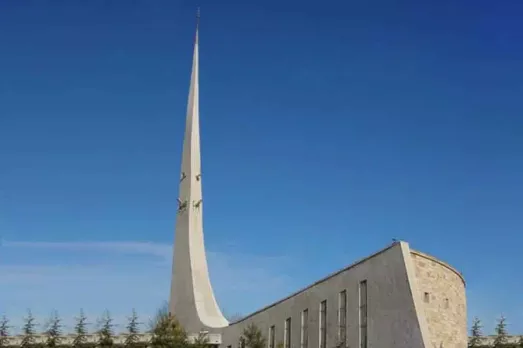
Derinkuyu Park Mosque
Derinkuyu, TR
The Derinkuyu Park Mosque is a contemporary architectural place of worship located in the Kültür Park at Derinkuyu, Turkey.
Here you can search for a building to visit. You can use the map find destinations, or you can use the filters to search for a building based upon what different criteria.

Derinkuyu, TR
The Derinkuyu Park Mosque is a contemporary architectural place of worship located in the Kültür Park at Derinkuyu, Turkey.
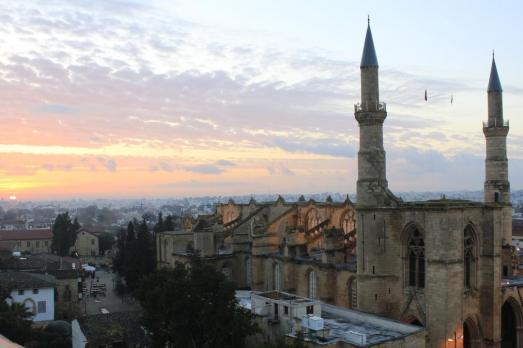
Lefkoşa, TR
The Selimiye Mosque was founded in the 13th century as a Catholic cathedral, the St. Sophia Cathedral. The cathedral may have been built on the site of a Byzantine church already called Haghia Sophia. After the Crusaders took Cyprus in 1191, the construction of a new sanctuary was commissioned by Alice of Champagne, wife of Hugh I of Cyprus (1205-1218). Construction began in 1208 and its consecration took place in 1326. With the occupation of Nicosia by the Ottomans (1570), St. Sophia Cathedral was transformed into a mosque and two minarets were added to a western part of the building. In 1954, the monument was renamed "Selimye Mosque" in honour of Sultan Selim II (1566-1574) who ruled at the time of the conquest of Cyprus.
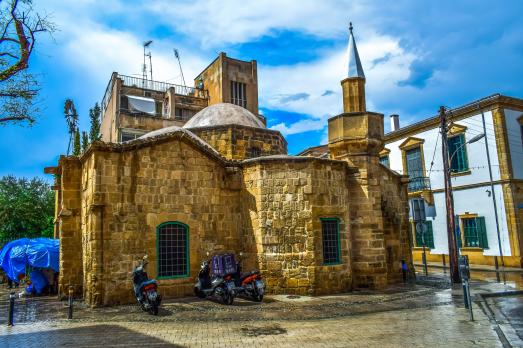
Nicosia, CY
The Arablar Mosque is a former small church which is now used as a mosque. This small church or chapel is an excellent example of the style of art and mixture of architectural elements that seem to have prevailed in Cyprus during the Venetian occupation. When the temple was converted into a mosque, the doors to the west and south were closed and a veranda was built on the northeast side. A small, simple minaret was also built in the northeast corner.
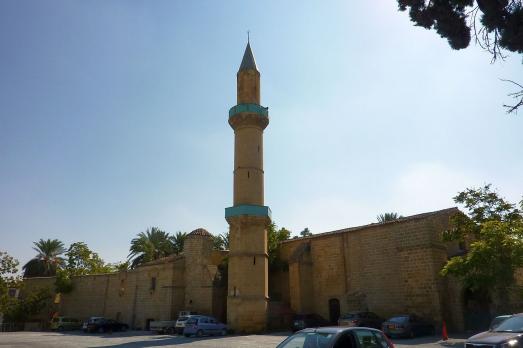
Nicosia, CY
The Ömeriye Mosque was established on the former Church of St. Mary of an Augustinian monastery. The upper part, up to the middle of the window height, was destroyed, probably by Turkish cannonading during the siege of Nicosia in 1570. Later, the Turks completed the walls and covered the building and the vestibule with a wooden roof. The interior of the church was covered with plaster, while the exterior of the minaret was added on the north side.
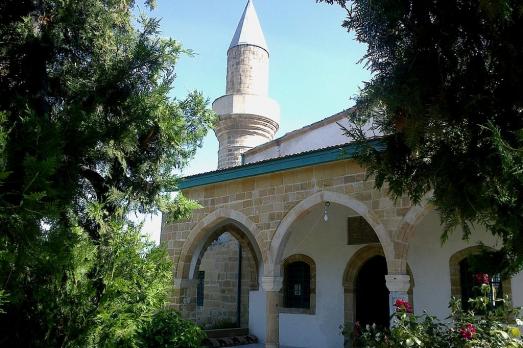
Nicosia, CY
The Bairaktar Mosque is dedicated to the flag bearer (Bayraktar) who fell while placing the Ottoman flag on the walls of Nicosia, at the Konchantza Gate, on 9 September 1570 during the Ottoman occupation of Cyprus. The grave of the flag bearer is located next to the mosque, but the name of the person remains unclear. The mosque was bombed three times during intercommunal violence in the early 1960s. In September 1975, the building was repaired, except for the minaret. In 1990 the mosque was completely repaired and in 2003 it was opened.

Kazan, RU
The Iske-Tash Mosque was built in 1802, supposedly on the site of the mass grave of the soldiers who defended Kazan against the troops of Ivan the Terrible in 1552. In 1830, the mosque was rebuilt in the Classicist style. Closed in the 1930s, the mosque was used as a school and then as a warehouse during the Soviet period. In 1994, the mosque was returned to the believers.
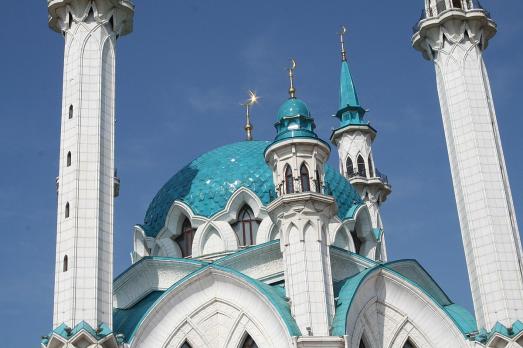
Kazan, RU
It was named after Kul Sharif, who was a religious scholar who served there. Kul Sharif died with his numerous students while defending Kazan from Russian forces in 1552. It is believed that the building featured minarets, both in the form of cupolas and tents. Its design was traditional for Volga Bulgaria, although elements of early Renaissance and Ottoman architecture could have been used as well. In 1552, during the Siege of Kazan it was destroyed by Ivan the Terrible. The mosque displays several detail through mosaics, ornaments, calligraphy, and more. Tatar scholars speculate as to whether some elements of Kul Sharif Mosque can be seen in Saint Basil's Cathedral in Moscow (8 minarets, a central cupola, not typical for Russian architecture). Since 1996, the mosque has been rebuilt in the Kazan Kremlin, although its look is decisively modern. Its inauguration on July 24, 2005, marked the beginning of celebrations dedicated to the Millennium of Kazan. It can accommodate 6,000 worshipers.
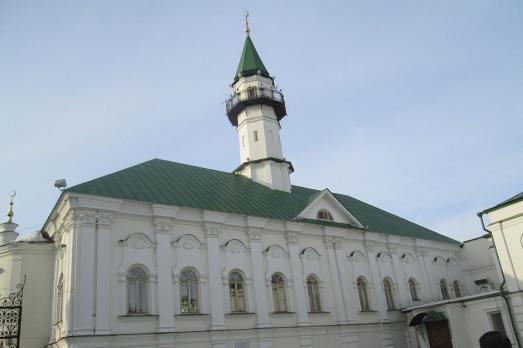
Kazan, RU
The Märcani Mosque, one of the largest mosques in Russia, was one of the symbols of the tolerance granted by Empress Catherine II (1762 - 1996) to non-Christian Russian communities at the end of the 18th century. This mosque remains the historical centre of Tatar-Muslim spirituality. The mosque was built in 1766-1770 and is the first stone mosque built in Kazan after it was taken by Ivan Terrible in 1552. The building was constructed in the tradition of medieval Tatar architecture with a minaret on the roof and forms in the provincial baroque style. In the decoration of the facades and interiors, the architectural decoration of the Petrine Baroque is combined with the decorative motifs of Tatar decorative art.

new
As a university city, cultural offerings abound in Tartu and will reach their peak after being designated one of three European Capitals of Culture for 2024. In this list, we've compiled the most interesting sacred places to visit in and around the old town.

Bodø has evolved from a picturesque fishing village to a bustling cultural epicentre in the northeastern Norwegian county of Nordland. Here is a list of the top churches to visit in Bodø, the only European Capital of Culture above the Arctic Circle.

The small Austrian spa town of Bad Ischl is known for its beautiful nature and peaceful atmosphere. Emperor Franz Joseph I of Habsburg, described it as an "earthly paradise". Here is a list of religious heritage sites you should visit.